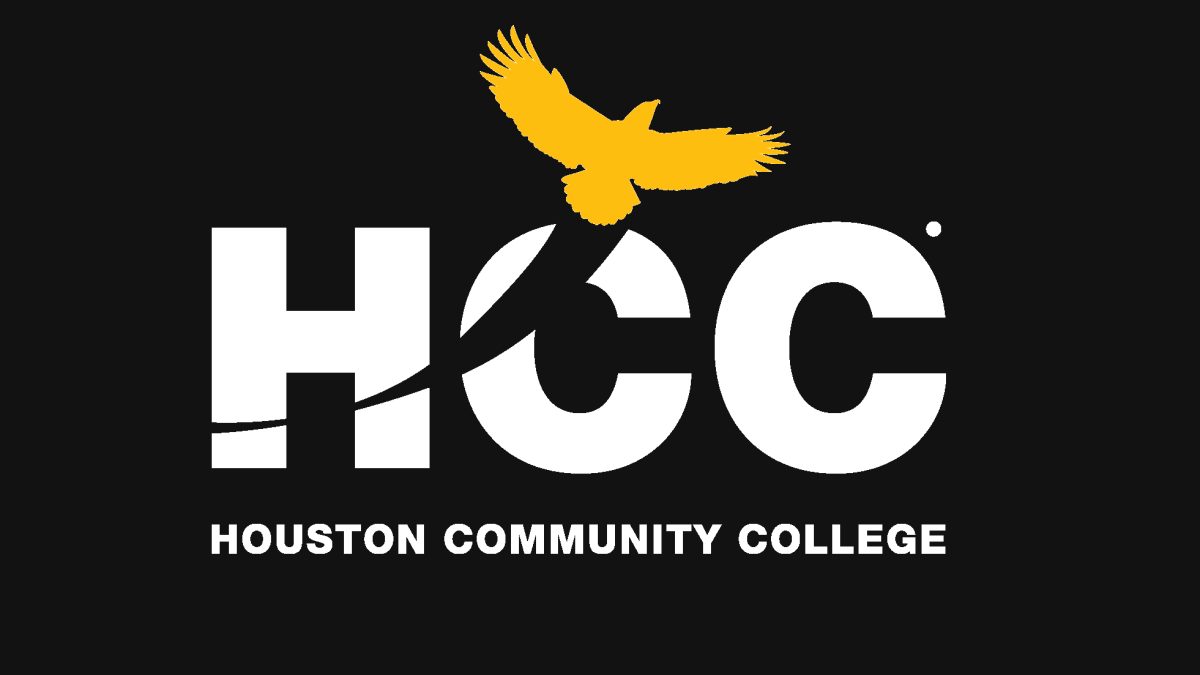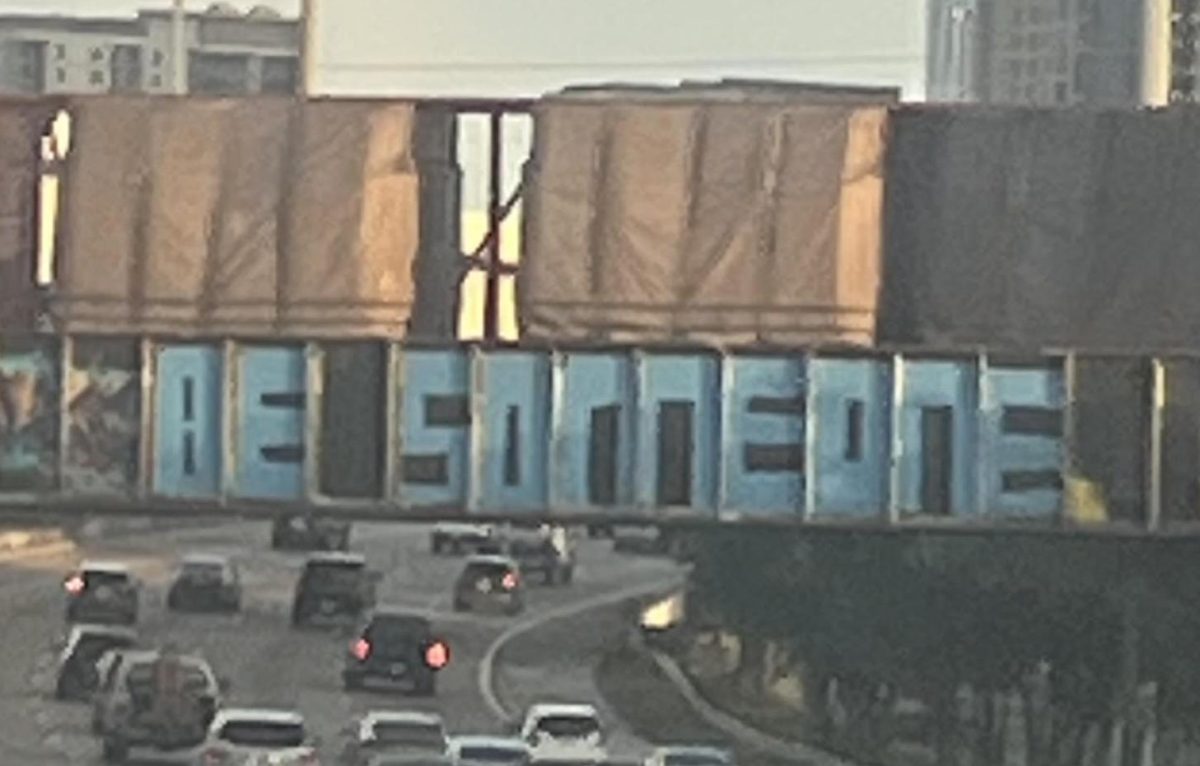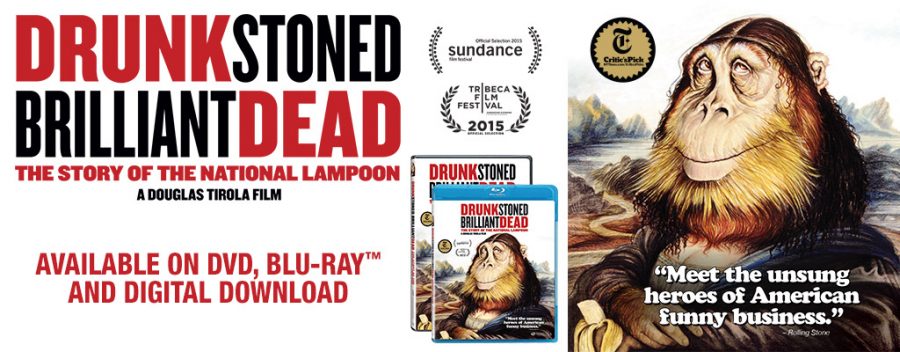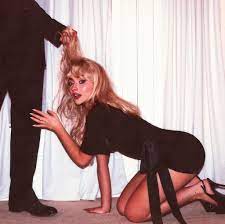Drunk, Stoned, Brilliant, Dead: The Story of the National Lampoon
November 22, 2016
Mention the word Comedy today, and most of us would call up a handful of names: South Park; Bill Murray; The Daily Show. Another name that might come up is Saturday Night Live. A smaller handful of people might even claim memories of the show’s glory days, when Murray, along with a cast of Not Ready for Primetime Players introduced the modern confrontational format of comedic satire as we know it. Still others might recall the slew of Brat Pack films produced and directed by the late John Hughes during the 80s and early 90s.
What’s important to remember is that before they made a name in their respective mediums, both Hughes and Murray cut their teeth working for a small humor magazine known as the National Lampoon. At one point in the documentary Drunk, Stoned, Brilliant, Dead, publisher Matty Simmons observes “Most of the cast of Saturday Night Live was taken from the first company of the National Lampoon Show.” Simmons’s testimony is backed up NL contributor Rick Meyorowitz who elaborated, “(SNL) was written by some former Lampoon people. It was starring some former Lampoon people. And it was very glamorous, and it was a huge hit immediately”. He adds, by way of explanation, “I gathered pretty quickly that if a liked Saturday Night Live, I should keep it to myself.”
If it’s true that SNL “sucked the energy” out of a periodical that for a time had its own mini-humor empire, then Douglas Tirola’s documentary on the rise and fall of the legendary comic rag should go some way toward shining a light on a chapter in the history of comedy that might otherwise be forgotten. These days the Lampoon is mostly associated with a string of Chevy Chase comedies (two of which were penned by the aforementioned Hughes), one of them now considered a holiday classic. However it was a long road to get there.
At another point, the making of the film Caddyshack is described as having a “disorganized, haphazard quality”. The irony is that this same quality appears to have been one of the keys to the magazine’s success. National Lampoon began its life as nothing more than an off-shoot of a Harvard University parody, The Harvard Lampoon. The idea is that each issue would parody the look, style, and content of various “straight press” titles such as Life Magazine. The big break came when the editor of Mademoiselle commissioned the Lampoon editing team of Doug Kenny and Henry Beard to do a full issue parody, complete with surrealistic clothing advertisements, with a healthy dose of pre – Sexual Revolution raunch. From there, other offers for satire came in from places like Time or Sports Illustrated. The success of these endeavors inspired Kenny and Beard to try and start their own parody magazine. After snagging a deal with Mat Simmons, the National Lampoon was born.
From the beginning, its development seems to have had a gradual, almost haphazard nature. Every next step or link in the chain also amounted to a blind leap of faith. Can we do an issue parodying all those nostalgic postage stamps from the 50s? Well, how does this look? Pretty funny as it turns out! Every issue seemed to be a combination stream – of – conscious chance, one part sophistication, and another half of pure sophomoric wit, with little to nothing in way of apologies. In time, Kenny, Beard, and Simmons were able to drawn in talent from the burgeoning comedy underground scene of the 1960s. This included artists who have long since gone on to become comedy standbys, such as John Belushi, Gilda Radner, Harold Ramis, and Michael O’Donohue. Standout pieces from the magazine include works such as “A Stranger in Paradise, a surreal what-if of Adolf Hitler surviving in the Bahamas, along with the High School Yearbook and Chris Miller’s Tales of the Adlephian Lodge that would together make up the nucleus of the film Animal House.
At the center of Tirola’s story is the enigmatic figure of Kenny. Something of a black sheep, and always an outsider either by happenstance or choice, Doug Kenny developed the kind of wit or outlook that would both help him cope and at the same time drive him dangerously close to the edge. In many ways, Kenny proved to be the driving engine for the whole affair. With his untimely passing in 1981, the magazine and its various enterprises limped along to end with a whimper and not a bang. It’s sort of a wonder the Lampoon still isn’t a footnote in the annals of satire. In a time when fashions and tastes can change in a single day, it’s refreshing to know that there are still many out there who remember the works of Kenny, Belushi, or Radner. At its best, the National Lampoon combined was able to combine a scatological approach to humor with blend of genuine sophistication; both elements running a white heat.
We’re entering an age where satire may find itself called upon to step up to bat once more for various reasons. If so, then the issue will remain that of speaking the truth to lies in multiple forms. That was always been the peculiar glory of humor writing. The value of a documentary like Drunk, Stoned, Brilliant, Dead gives new viewers a chance to discover the lean and noble roots of the comedy profession. For the old timers, it can serve as a valuable reminder of old ideals which still have enough life left in them for a new day.

























